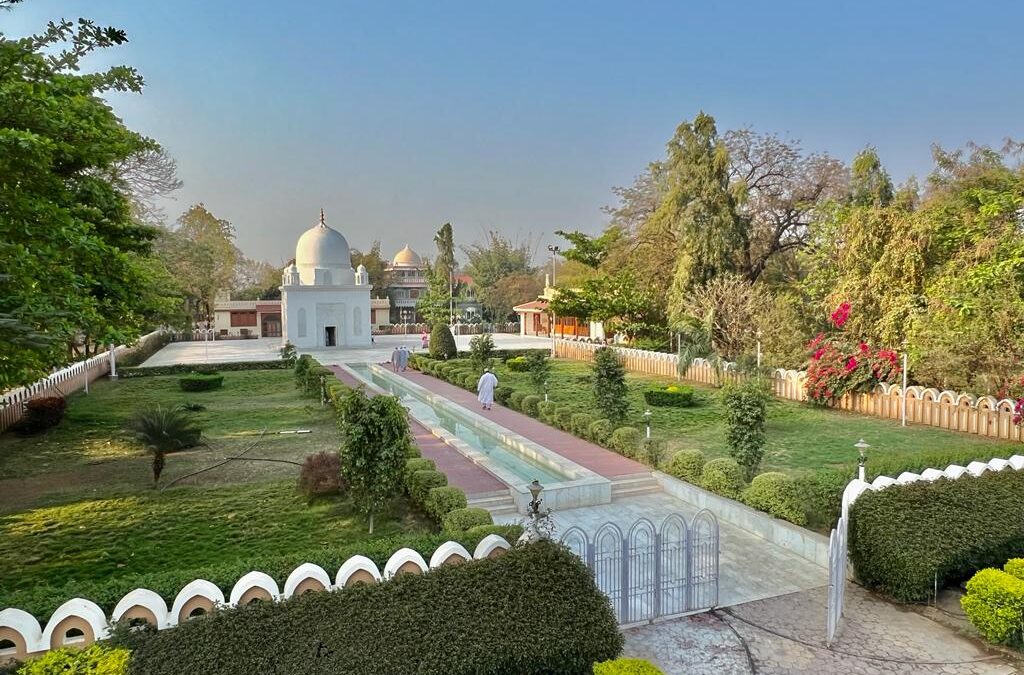By Murtaza Sadriwala
The ride enroute Dongaon, a hamlet near Aurangabad in Maharashtra, was remarkably calm, something I hadn’t expected due to an extremely eccentric work schedule the previous day. The endless swathe of green fields and farmlands tucked below rolling hills arrested my attention the moment I glanced out the window.
On my way to Dongaon, to pay respects at the Mausoleum of Maulai Noorduddin Saheb (a Dawoodi Bohra leader), I drank in the countryside sights like a parched traveller drinking water after a weary journey.
Upon disembarking at the Mausoleum complex, I immediately noticed bicycles and alternative fuel vehicles as modes of mobility around the complex. The thick trees bordering the wall of the complex swayed in the breeze that tickled its leaves as it passed. The colourful bird feeders hanging on the branches caught my eye, with house sparrows congregated around them.
“When are we going to the Mausoleum, abba,” my 8-year-old son asked me while continuously gazing at the pristine white structure.
“Very soon,” I instantly replied.
Tranquility
After refreshing ourselves at a rented villa in the complex, my family and friends headed to the long fountain pathway that led to the entry of the majestic marble Mausoleum – inspired by the structures built during the Fatemi Imams in Cairo, Egypt.
Inside the Mausoleum, I felt peace like never before. It was as if being there, my worries were disappearing. I was being recharged, strength returning to my limbs and my mind.
As I explained to my son about the life and work of Maulai Noorduddin Saheb, I wondered how religious places nestled in the lap of nature provide a sense of tranquility, free from the dizzying rush and noise that is a trademark of city life. Especially now more than ever with people coming out of the pandemic stress and the growing desire to bond with nature and spirituality to unwind themselves. Breathe in the serenity, and be with nothing but themselves.
Sustainability
We walked around the cobblestone pathway for some time, soaking in the beautiful display of nature around us. On our right were patches of a lush green bamboo plantation outside the villas with clay-tiled rooftops. Behind the complex, amidst the horticulture farmland, was a wet composting pit.
“What’s this used for”, asked my son with a dazed expression.
I explained, “son, the kitchen waste, like bones and peels, gets dumped into this pit to make compost, which is used to enrich the soil and deal with plants’ diseases and pests.”
As we walked back to the ‘Mawaid’, a large community dining area, I pointed at the solar panels installed on rooftops and explained the benefits of renewable energy and how they provide a natural source of electricity to the pathway lights.
Repose
After getting a detailed tour of the history and heritage of the place by the manager, we returned to our rented villa. The night air was balmy, with a slight breeze in the air. Stars, actual stars, twinkled in the night sky above us, the crickets chiming in every now and then.
The absence of pollution, the stench of blocked sewage drains and the constant honking of cars and crowds, felt surreal.
“Abba, this place is so calm and soothing. Why doesn’t everyone live here?”
I nodded. “Life is like a never-ending traffic rush: we are always looking to get somewhere but usually find ourselves stuck. This tedious routine makes us lose sight of what is important – our physical and mental well-being – the reasons why we started working so hard.
Humans, despite popular belief, were not designed to work and live the way we do today. So caught up in the material things that we don’t focus on spirituality and sustainability – that make us happy and healthy.
Religious tourism provides us with the power to heal, unwind and rejuvenate ourselves in all aspects – physically, mentally and spiritually. And these nature-laden sites with sustainable practices built around them provide a natural therapy to our aching body and mind.
Particularly in a diverse and culturally rich country like ours, religious places offering a safe and sustainable getaway are paradise tucked between cities, like an oasis for those looking for some relief.
“I wish to visit more such places every weekend,” my son chuckled.
“Me too”, I responded. “But for now..we do the bedtime.”
Author: Murtaza Sadriwala is a writer and media professional associated with various Dawoodi Bohra community Trusts. As a Trustee, he also contributes to the community’s environmental body, Burhani Foundation. He is passionate about nature preservation and exploring ways to lead a sustainable life.
- How do you avoid environmental pollution? - July 19, 2023
- Learn how to grow a mango tree from seeds - June 29, 2023
- Commercial Electric Vehicles platform Turno raises $13.8M as it scales across India and builds proprietary battery technology - February 9, 2023
- HelpAge India rolls out ‘Project Surakshit’ to train 50,000 elders in Digital Safety - February 8, 2023
- A trip of faith and sustainability: An enriching escape to Dongaon, Maharashtra, India - January 9, 2023
- A Sustainable Kidswear Wardrobe for the Little Ones - July 25, 2022
- 10 Sustainable and Ecofriendly Apparel Brands from India That Are Blazing the Trail - July 23, 2022
- Kajal can harm your baby’s eyes? - July 20, 2022
- Greenubuntu organizes plantation drive in Paras Hospital, Patna - July 11, 2022
- Only electric cars to be sold in India by 2030: Go Green - February 28, 2022

